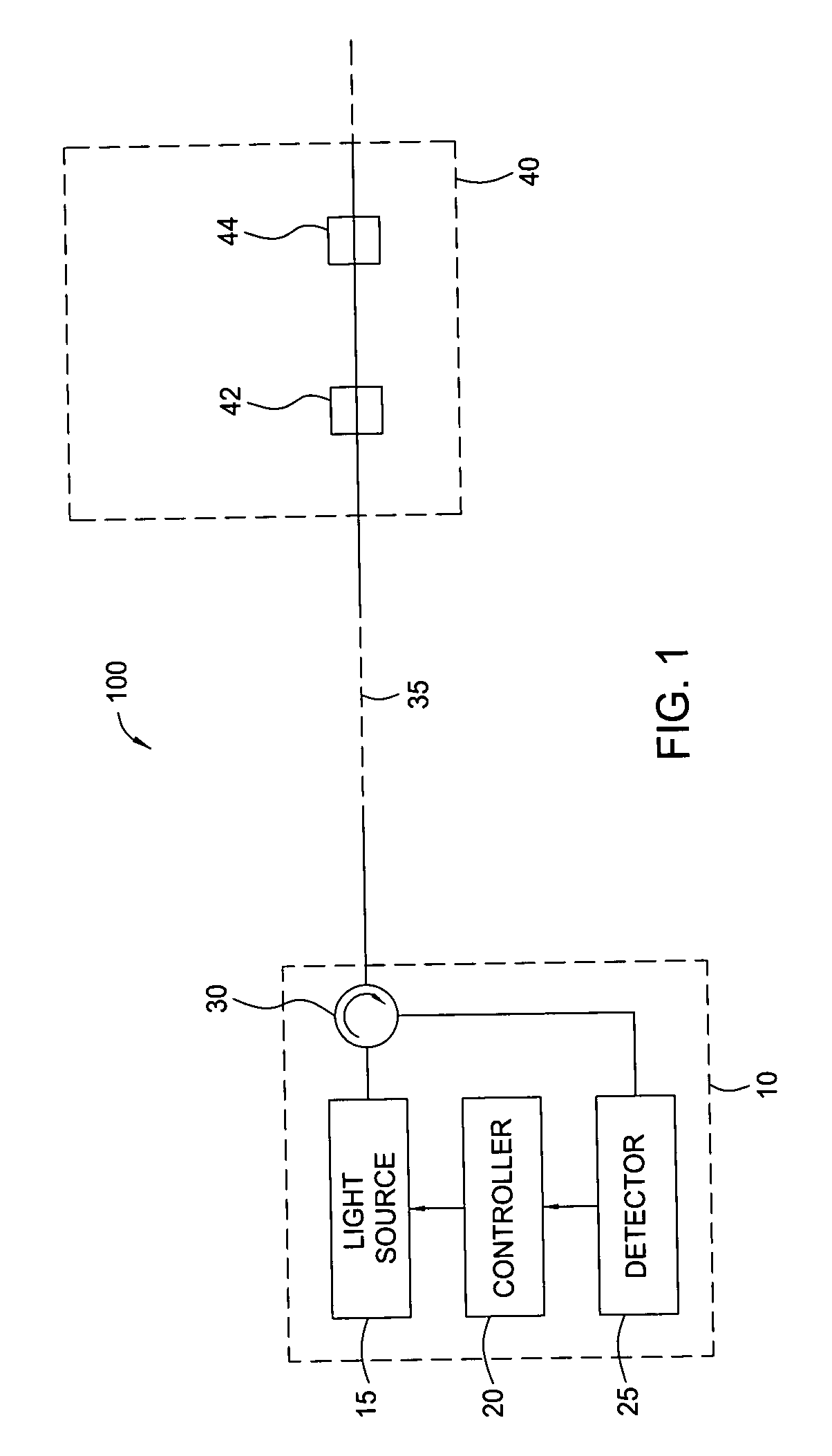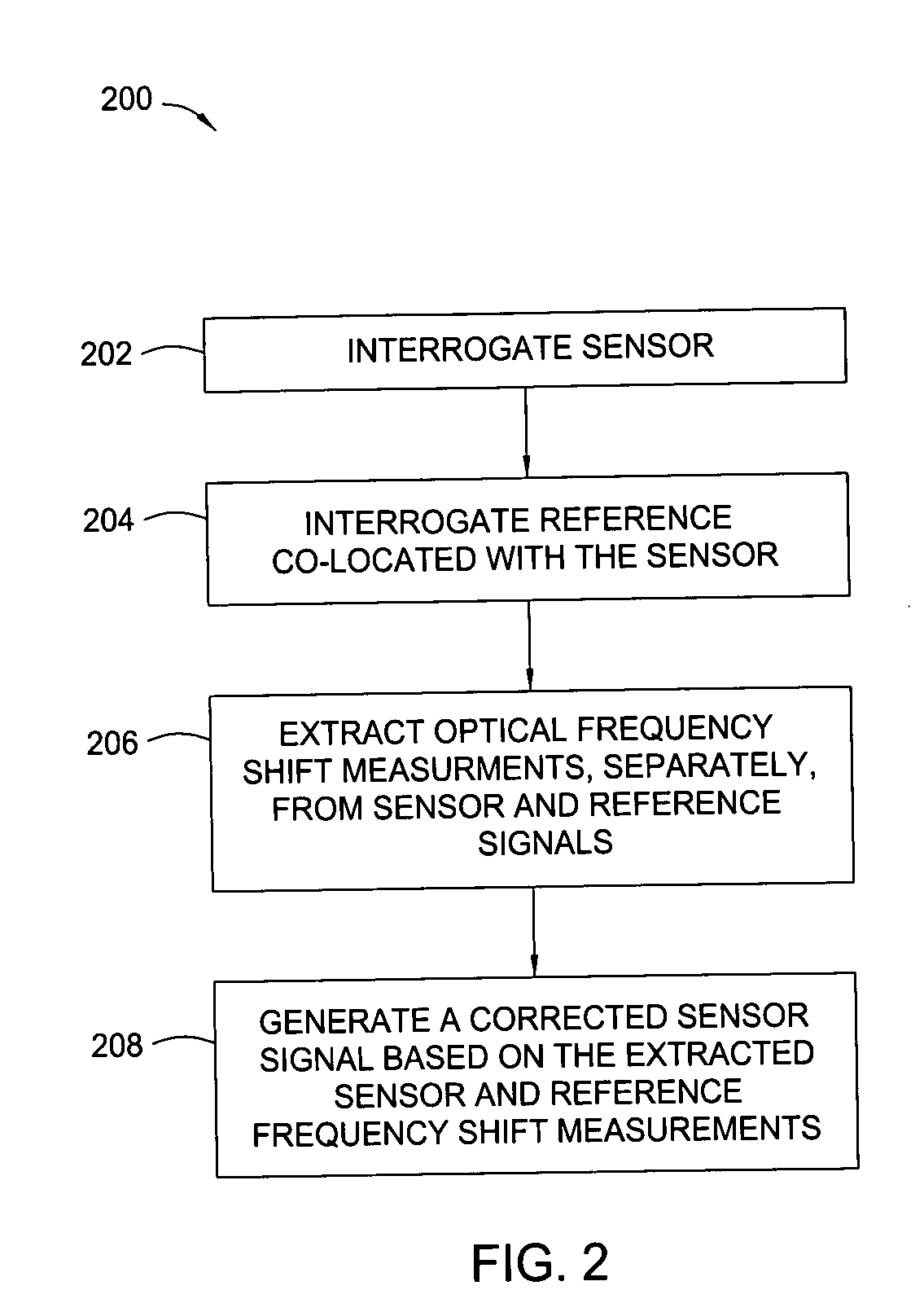Downhole optical sensor system with reference
a technology of optical sensor and reference, applied in the field of optical sensing systems, can solve the problems of inconvenient use, small size of optical sensors, and low cost, and achieve the effects of improving the accuracy of measurement results
- Summary
- Abstract
- Description
- Claims
- Application Information
AI Technical Summary
Problems solved by technology
Method used
Image
Examples
Embodiment Construction
[0020] Embodiments of the present invention provide improved optical sensor systems and methods for eliminating or reducing the effects of frequency fluctuations in an interrogating light signal used to illuminate optical optical sensors such as Bragg grating sensors and optical interferometer sensors. The frequency fluctuations may be due to light source instabilities, changes to a light signal traveling through an optical fiber (or any other type optical waveguide) to a sensor, and / or other environmental conditions and effects. Interrogating light signal frequency fluctuations may result in optical sensor output variations and unwanted noise. However, embodiments of the present invention may be used to improve the accuracy and repeatability of optical sensor systems by allowing for the correction of frequency fluctuations through the use of reference devices co-located with sensors. Embodiments of the present invention may offer numerous advantages over prior art optical sensor sy...
PUM
 Login to View More
Login to View More Abstract
Description
Claims
Application Information
 Login to View More
Login to View More - R&D
- Intellectual Property
- Life Sciences
- Materials
- Tech Scout
- Unparalleled Data Quality
- Higher Quality Content
- 60% Fewer Hallucinations
Browse by: Latest US Patents, China's latest patents, Technical Efficacy Thesaurus, Application Domain, Technology Topic, Popular Technical Reports.
© 2025 PatSnap. All rights reserved.Legal|Privacy policy|Modern Slavery Act Transparency Statement|Sitemap|About US| Contact US: help@patsnap.com



